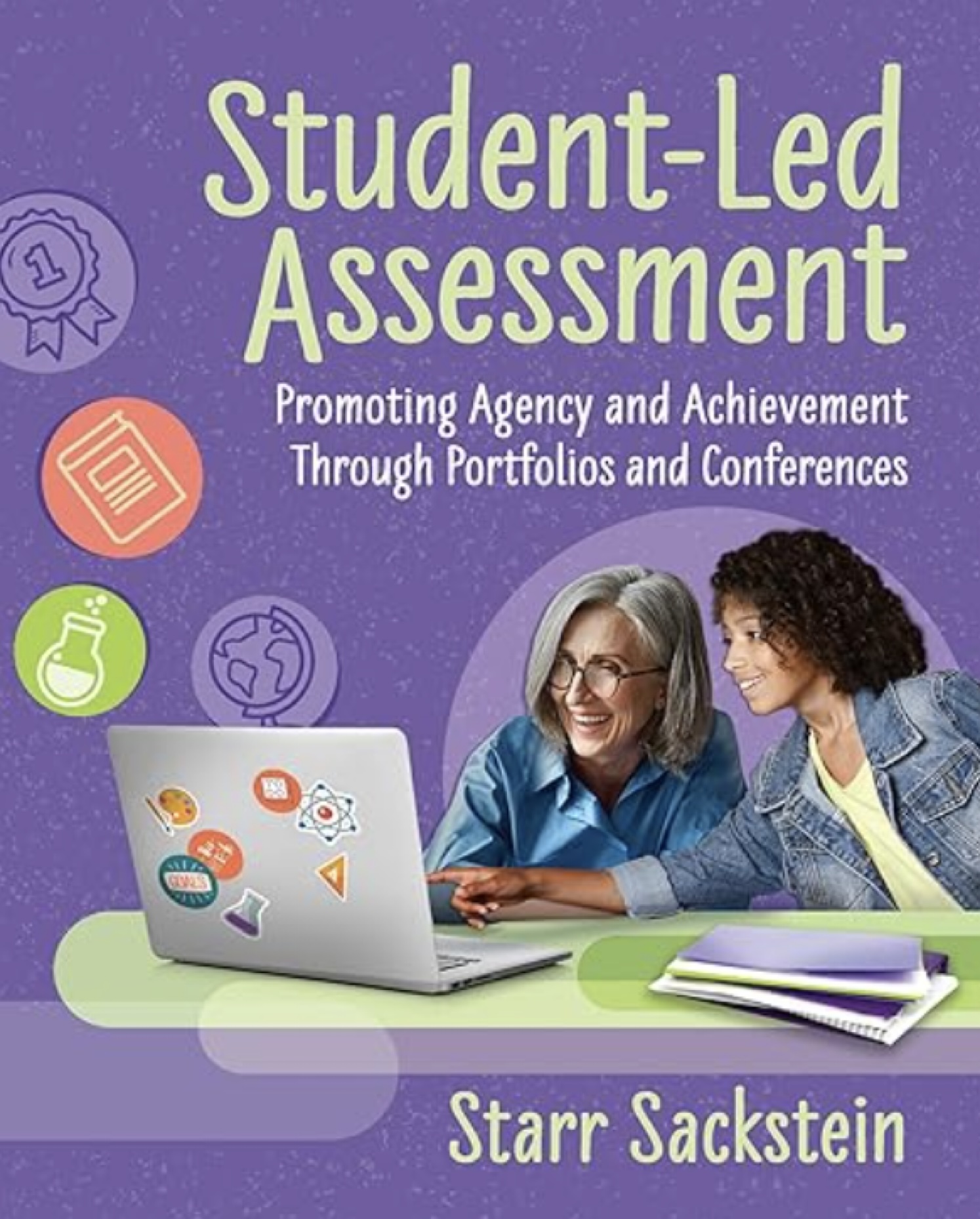
Student-Led Assessment: Promoting Agency and Achievement Through Portfolios and Conferences by Starr Sackstein
explains in detail how you can shift your teaching practice to one where students take control over their learning and assessment. It features periodic conferences where students give evidence of what they have learned and set goals for their next efforts. Her model also allows for self-paced learning and peer feedback. Leaders should try to get this book into the hands of as many teachers as possible.
- Student voice is vital to understanding what students know and can do. It’s our job to create authentic opportunities for students to express their challenges and successes. Such conversations can be the basis for determining students’ grades. In this book you will learn how to leverage student conferences and have students lead parent-teacher conferences. You will also learn how to use portfolios as part of this process. (Each chapter contains reflections on the subject from other teachers or professors.)
- Here we explore the building blocks of teaching students to talk about their learning in cohesive and detailed ways and to advocate for themselves. It’s your job then to adapt what you learn to your specific students and situation.
- At the heart of student success lies the relationships you have with them and that they have with each other. You need to plan how to make this happen. You also need to reveal your interests, strengths, and challenges so they see you as another learner. Trust is earned, which is highly evident in the learning process. Above all be sure to let students know when you have made a mistake. Apologize if it is appropriate. This will help them to take risks that will inevitably lead to mistakes that promote learning.
- In order to get to know students in a less than superficial manner, you need to take on the role of a detective or an archaeologist. Approach each student with a real interest and warmth. Meet them by name at the door. Assume positive intent when they take a misstep. Put important concepts on the wall, but don’t make it too cluttered. Ask them how they feel about the space. Remember that all kids can!
- Large sets of standards such as the Common Core can be overwhelming. You need to prioritize by looking for knowledge and skills that can 1. have value beyond a single assignment 2. have value in multiple disciplines, and 3. allow for success in the next grade or level. You then need to work with your students to come up with an agreed upon idea of what proficiency looks like. Here we have a format for unpacking a standard
- Now it’s time to create student-friendly learning targets. This requires looking at standards in smaller bites. Develop success criteria so that students know what success looks like. Students can also be partners in developing rubrics. Don’t expect your first tries to be great. Supply exemplars that are not easy to copy. They can be from former students or be teacher generated. Supply feedback to groups and individuals as much as possible.
- Formative assessment is ongoing and informs future instruction. Students should know what it is and be involved. It demonstrates achievement while reflection focusses more on the process. Both are important. Formative assessment provides feedback that students can use to revise their work. By it’s nature, formative assessment is differentiated.
- At some point, peers should be involved in formative assessment. Students should write their reflections for teachers to read. In some cases teachers should just focus on the important things as opposed to everything. The process should involve students writing new goals to share with the teacher and at least one peer. Goals should be as specific as possible. A major goal is for students to become more self-sufficient learners.
- Portfolios allow students, teachers, parents, and peers to see the fruits of a student’s labor. (This can be facilitated if the portfolio is available online.) They also put students in charge of tracking their own growth. They can foster independence while fueling reflection, creativity, and authentic life-long learning. They can feature a capstone activity or multiple pieces that demonstrate a learner’s best efforts. They can even contain a series of works that show growth over time.
- Each teacher should do their own portfolio first to share their students’ experiences. Once finished, students should write a standards-based reflection about what their work demonstrates. The students should also present their portfolio in order to defend their efforts. Here we have the story of how one district implemented portfolios for all of their students. Expect this process to take two to three years.
Introduction
Part 1: Building Structures to Promote Learner Agency
1. Building a Learner Agency Enhanced Environment
2. Promoting Clarity to Deepen Student Understanding
3. Using Formative Assessment to Promote Learner Voice and Self-Advocacy
4. Developing a Portfolio System That Supports Purposeful Goals
DrDougGreen.com If you like the summary, buy the book





